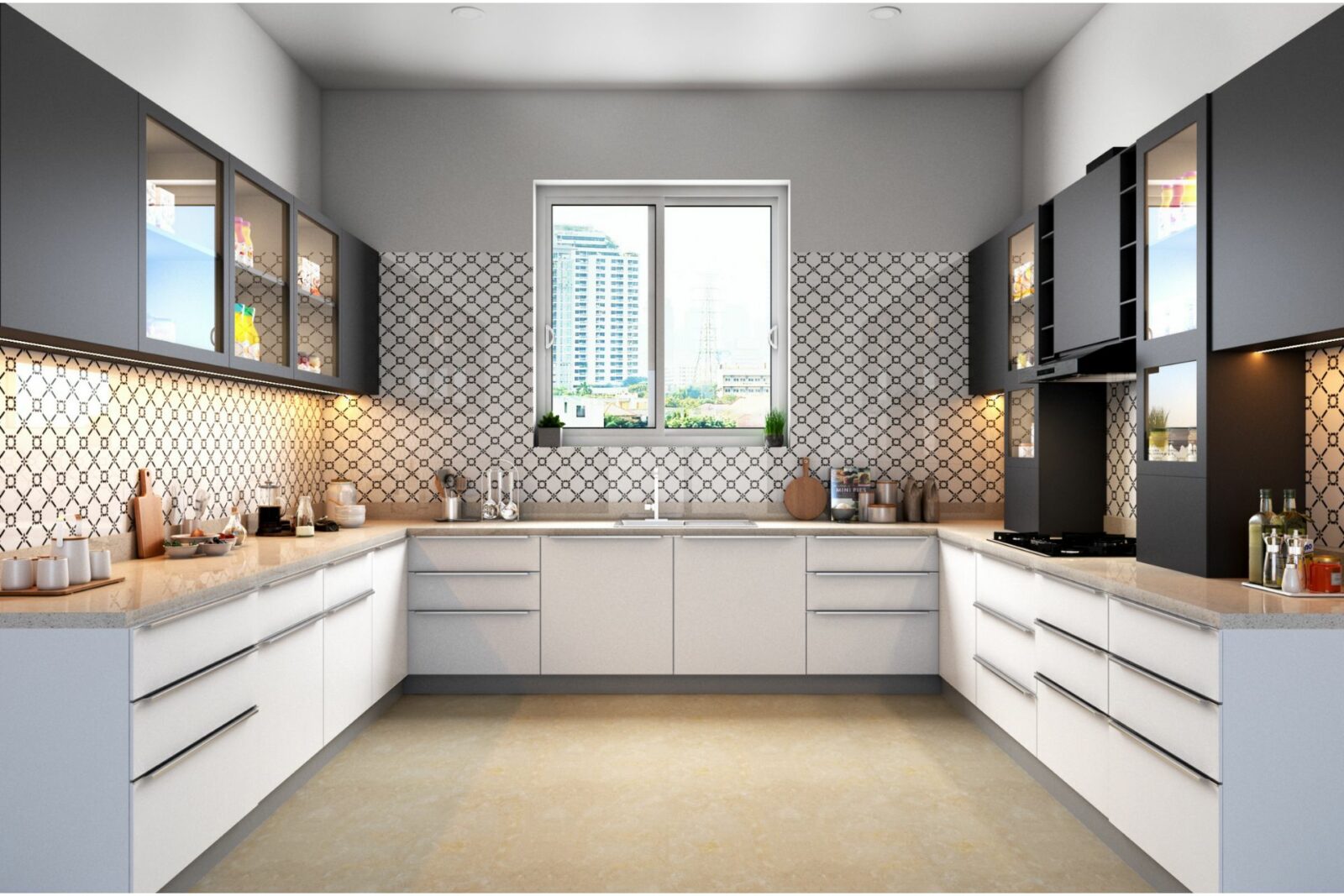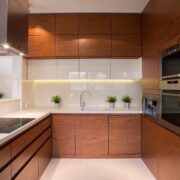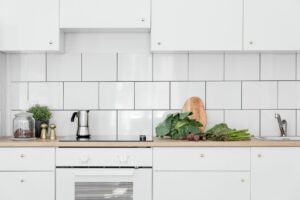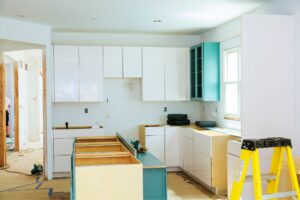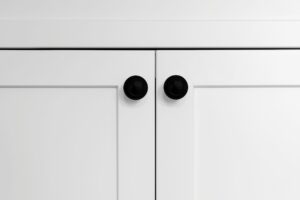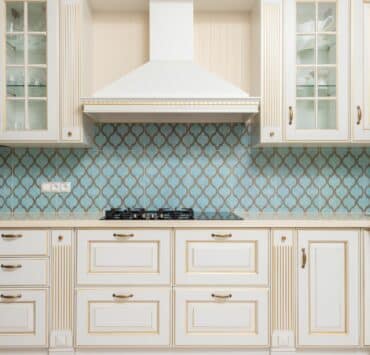Cabinets wield significant influence over the shape, appearance, and overall ambiance of a kitchen. It’s crucial to carefully contemplate materials, types, finishes, and colors, as cabinets are a lasting and integral addition to a home. Here’s a guide on how to choose kitchen cabinets.
How to Choose Kitchen Cabinets: A Complete Guide
Types of Kitchen Cabinets
Stock Cabinets:
Ready-made stock cabinets are usually found fully assembled in standard sizes and configurations. They are conveniently available for immediate pickup the same day or within a few days. While custom options offer more flexibility in sizes and styles, stock cabinets provide a budget-friendly solution for remodeling projects. The preassembled nature of stock cabinets facilitates a faster installation process.
If you opt for preassembled cabinets, ensure you have a vehicle with sufficient space for transport, or make arrangements for convenient delivery.
Semi-Custom Cabinets:
Semi-custom cabinets are crafted upon order, offering a broader spectrum of sizes and styles compared to stock cabinets. This increased flexibility allows for a more personalized kitchen design tailored to individual requirements. However, semi-custom cabinetry entails a longer lead time for delivery in comparison to stock cabinets and comes with a slightly higher cost.
Custom Cabinets:
Custom cabinets, on the other hand, are meticulously crafted to meet specific size or design standards. Whether you desire a distinctive focal piece for your kitchen or have an unconventional space that doesn’t accommodate stock or semi-custom options, custom cabinets offer a tailored solution. A skilled custom cabinetmaker has the capability to build virtually anything from scratch. Beyond size and configuration, customization options include choosing between a framed or frameless design, selecting door and drawer-front styles, determining the preferred type of overlay, and deciding on color and finish.
Custom cabinets generally represent the highest cost among the three types, with the exact price varying based on factors such as size, materials, and chosen options. The timeline for receiving a custom cabinet order is contingent upon the schedule of the cabinetmaker.
Types of Cabinet Materials
Plywood:
-
- Highest quality, strong, easy to install, and lighter than MDF or particleboard.
- Ideal for long-term ownership, despite being pricier.
MDF (Medium-Density Fiberboard):
-
- Considered eco-friendly, faced in laminate or thermofoil due to paint limitations.
Particle Board:
-
- Lowest grade material, prone to fracturing, and affected by environmental changes.
- Inexpensive, suitable for shorter-term residency, cabins, or rentals.
Navigating these considerations ensures an informed decision when selecting kitchen cabinets that align with your preferences and stand the test of time.
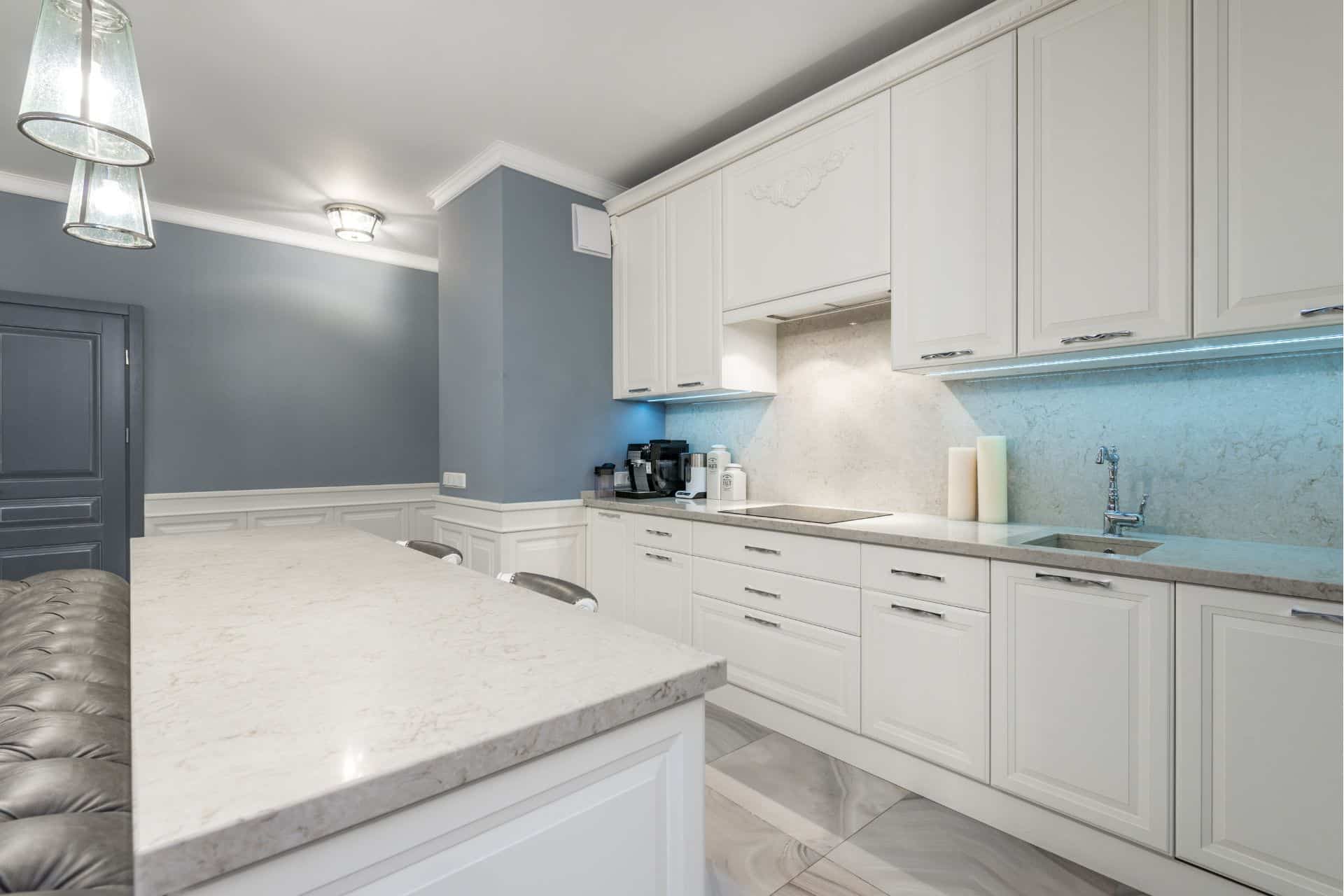 Kitchen Cabinet Layouts You Must Know
Kitchen Cabinet Layouts You Must Know
Diverse and well-designed kitchen cabinet layouts significantly contribute to the overall functionality and aesthetic appeal of the space. Kitchen cabinets, while seamlessly integrated, are categorically comprised of three primary types: base, wall, and tall cabinets. Additionally, there are specialty cabinets that serve specific purposes, provided there is ample space and budget flexibility.
Base Cabinets
Base cabinets are fundamental components in every kitchen. Positioned at a height of 36 inches, these cabinets rest on the floor, offering both storage space below and a convenient countertop workspace on top. Typically, base cabinets boast a depth of 24 inches.
These cabinets are available in various configurations tailored to address specific functional needs. For instance, a sink base cabinet is designed to be wide enough to accommodate a double-basin sink on its top surface. Alternatively, a corner base cabinet is crafted in an L-shaped configuration, fitting seamlessly into the corner of the kitchen layout.
Wall Cabinets
A common feature in most kitchens, wall cabinets play a crucial role in maximizing vertical space. Ranging in depth from 12 to 17 inches, these cabinets are affixed to wall studs and are elevated approximately 18 inches above the countertop. Wall cabinets serve as storage solutions for plates, glassware, and frequently used food items, keeping them easily accessible yet neatly organized.
Tall Cabinets
Tall cabinets are characterized by their narrow and towering design, often reaching up to the ceiling or nearly so. Referred to as pantry cabinets, these units are specifically designed to accommodate small kitchen appliances and store large food items such as flour or rice. Tall cabinets make efficient use of vertical space, providing ample storage without compromising floor space.
Specialty Cabinets
In addition to the fundamental base, wall, and tall cabinets, there exists a category of specialty cabinets that cater to unique storage needs. This eclectic mix includes hutches, wine racks, appliance bays, and slider pull-outs. Specialty cabinets offer tailored solutions for specific items or kitchen functions, adding both practicality and personality to the overall kitchen design.
Cost of Kitchen Cabinets
Cost of kitchen cabinet ranges from $3,000 to $25,000, with an average expenditure of approximately $14,000. This pricing information is sourced from various material websites and is contingent upon several influencing factors. The type and material of the cabinets, the square footage of your kitchen, and other considerations contribute to the variability in costs.
The choice between ready-to-assemble (RTA) cabinets and professionally installed cabinets is a pivotal factor affecting overall expenses. Opting for RTA cabinets eliminates labor costs from the equation, potentially influencing the final cost significantly.
When it comes to the labor cost for installing semi-custom kitchen cabinets, the expenditure is estimated to fall within the range of $75 to $250 per linear foot. Understanding these cost dynamics enables homeowners to make informed decisions aligned with their budgetary considerations and preferences.
Framed Vs. Frameless Cabinets: Which One Should You Choose?
The choice between framed and frameless kitchen cabinets holds significant implications for both the appearance and functionality of the kitchen. Framed cabinets, characterized by their strength and traditional aesthetic, stand in contrast to the modern and accessible design of frameless cabinets.
Framed Cabinets
Framed kitchen cabinets feature a prominent one and a half-inch wide frame on the front of the cabinet box, encircling the cabinet doors and drawer fronts. The presence of this frame enhances the overall strength of framed cabinets, providing stability and a classic look. However, accessing the contents within framed cabinets can be slightly more challenging due to the reduction in the size of the cabinet opening. The framed style is synonymous with a timeless and traditional kitchen aesthetic.
Frameless Cabinets
Frameless cabinets, often referred to as contemporary or Euro-style cabinets, eschew the cabinet box face frames found in their framed counterparts. In this design, the doors and drawers seamlessly blend with the cabinet boxes, presenting a smooth and cohesive appearance. The absence of a face frame contributes to a more modern and streamlined look. Notably, frameless kitchen cabinets offer enhanced accessibility, earning them the alternative moniker of “Full access cabinets.” This design choice prioritizes a sleek and contemporary aesthetic while facilitating easier access to the cabinet’s contents.
In summary, the decision between framed and frameless cabinets boils down to a balance between strength and accessibility, with framed cabinets embodying a classic charm and robustness, while frameless cabinets embrace a modern, seamless design with improved access to the cabinet space.
Choosing Kitchen Cabinet Door Overlay
Choosing the right door overlay is crucial when you are looking into how to choose kitchen cabinets. A key decision in selecting kitchen cabinet doors, and there are three main types to consider: inset, partial, and full overlay.
Inset:
Inset cabinet doors do not have an overlay. When closed, the door sits within the cabinet, flush with the outer edges. This design creates a seamless and clean appearance.
Overlay:
Overlay cabinet doors cover the outer perimeter of the cabinet box and frame when closed. There are two variations:
Full Overlay:
Full overlay doors completely cover the entire perimeter of the cabinet, providing a cohesive and sleek look.
Partial Overlay:
Partial overlay doors expose a portion of the cabinet front, typically between 1/4-inch and one and a half inches. This design balances aesthetics with practicality, making installation easier and accommodating potential long-term changes in the cabinet’s shape.
Most kitchen cabinets opt for either a partial or full door overlay due to the ease of installation and adaptability to variations in cabinet squaring. The overlay effectively conceals any minor changes in the cabinet’s alignment.
In contrast, inset doors, lacking an overlay, reveal changes in cabinet shape, which can impact the smoothness of opening and closing. Understanding these overlay options empowers homeowners to make informed choices based on both aesthetic preferences and functional considerations.
Kitchen Cabinet Finishes and Colors
Painted: Painted kitchen cabinet finishes offer versatility and a vast palette of colors to choose from. These cabinets are easy to refresh when they appear tired, go out of style, or sustain damage.
Stained: Stained finishes enhance the natural beauty of the cabinets’ walnut, pine, oak, or other hardwood veneers. Coupled with a protective clear top coating, usually polyurethane, stained finishes are affordable and easy to touch up. This popular choice comes in various shades of brown or gray, ranging from light wood approaching white to nearly black.
Glazed: Glazed finishes involve adding a transparent or semi-transparent glaze to painted or stained kitchen cabinets. Wiped off selectively, this process leaves thicker deposits in fine details and bevels, giving cabinets an aged, antique appearance.
Lacquer: Lacquer, applied with a sprayer, brush, or roller, forms a hard shell and often has a glossy finish. While smooth and easy to clean, lacquer finishes are best suited for climate-controlled spaces as wood expansion and contraction can lead to cracks.
Laminate: Laminate kitchen cabinets are constructed on a base of medium-density fiberboard with glue-bonded laminate sheets. They can mimic natural wood or be a solid color in virtually any shade.
Thermofoil: Thermofoil is a thin polyvinyl chloride (PVC) overlay heat-bonded to MDF. Tough, waterproof, and easy to clean, thermofoil provides a surface for less expensive MDF, helping control kitchen remodel and building costs. However, repairing thermofoil cabinets can be challenging if the coating delaminates or becomes scratched, and they cannot be painted.
Kitchen Cabinet Accessories
Accessories play a crucial role in customizing kitchen cabinets to meet your specific needs and cooking style.
Pantries: Not your typical tall cabinets labeled as pantries, but rather, large, deep pull-out drawers designed for storing large canned or dry food items.
Pullouts: Narrow sliding cabinets that fit neatly between base cabinets, providing an ideal space for organizing spices and other small items.
Dividers: Drawers that come pre-compartmentalized for utensils, eliminating the need for separate utensil trays and enhancing organization.
Wastebaskets: Giant counter-to-floor rollouts designed to hold wastebaskets and recycling containers, keeping them conveniently tucked away.
Organizers: Bookshelf-style compartments tailored for thin, narrow items such as cookie sheets, providing a space for them to rest on-edge.
Toe kicks: Flat, narrow sliding shelves that replace some of the cabinet toe kicks, utilizing otherwise wasted space for additional storage.
Corners: Full, half, D-shaped, and kidney-shaped lazy Susans that rotate within blind cabinet corners, improving access to these dark and difficult-to-reach spaces.
